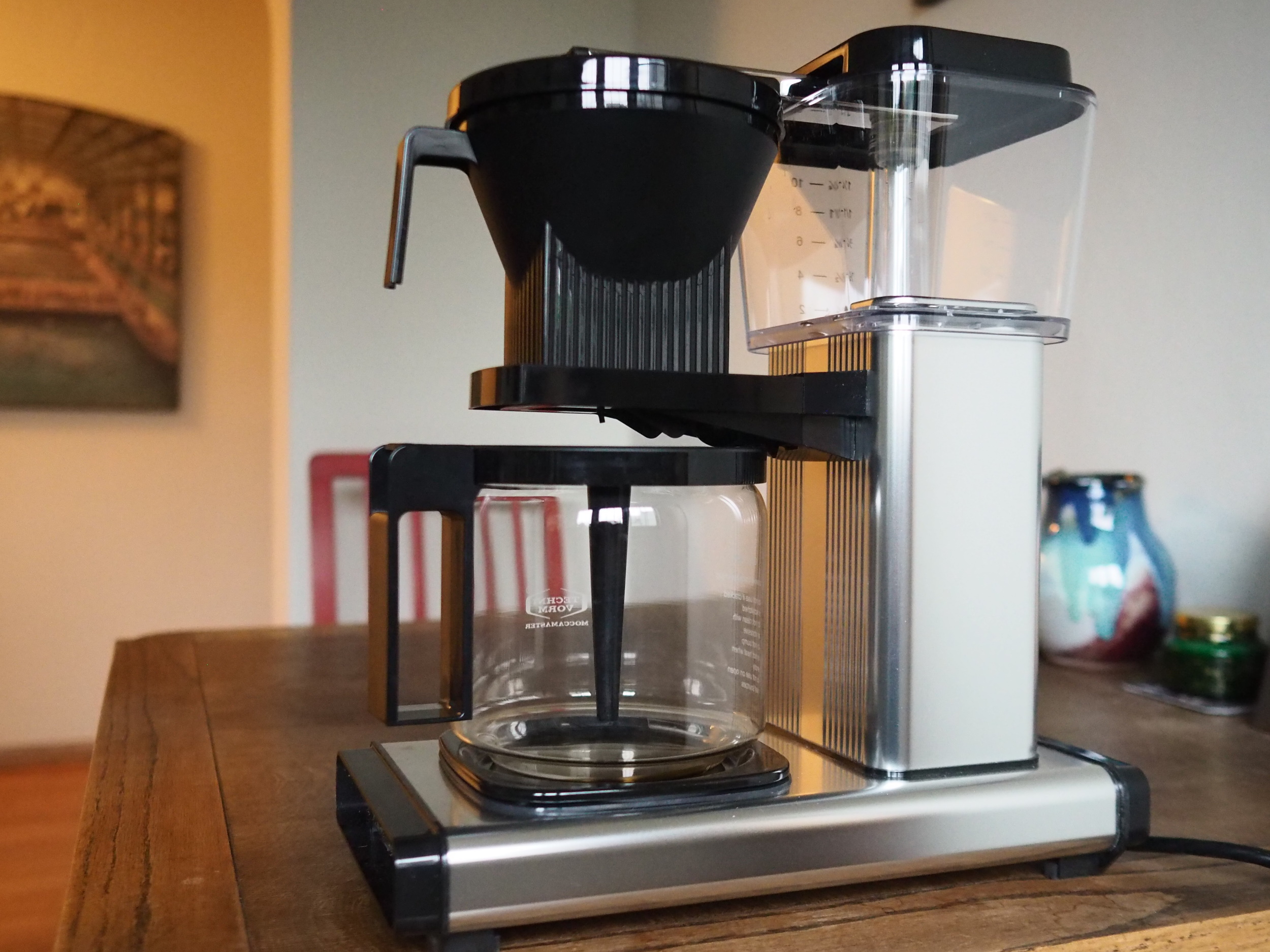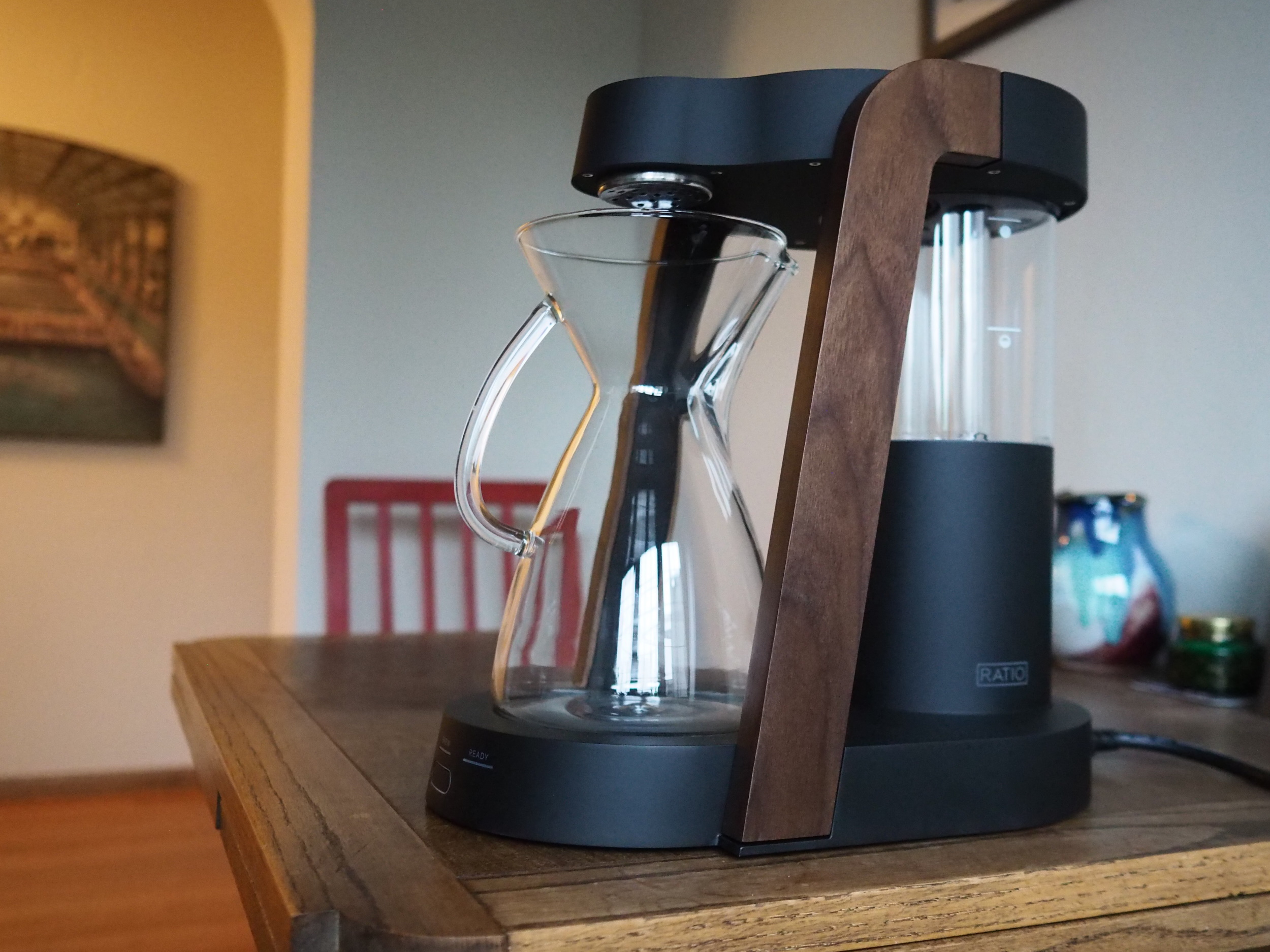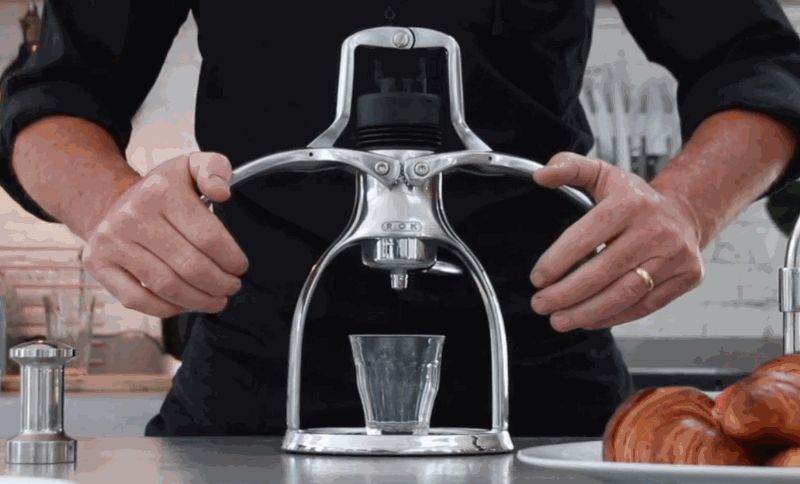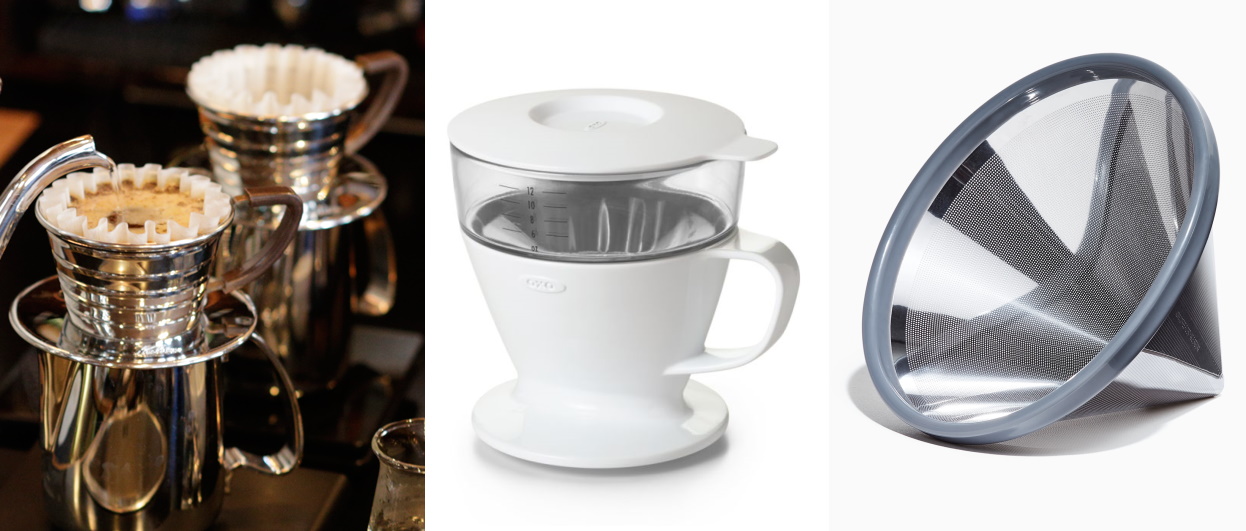Welcome to TechCrunch’s 2020 Holiday Gift Guide! Need help with gift ideas? We’re here to help! We’ll be rolling out gift guides from now through the end of December. You can find our other guides right here.
The pandemic has meant we leave our homes far less often, and that means fending for ourselves when it comes to coffee. But too many of us have old, cheap coffee makers or worse, pod-based ones at home. Here are the best ways to elevate your coffee game or delight the java lover in your life.
This article contains links to affiliate partners where available. When you buy through these links, TechCrunch may earn an affiliate commission.
Every grocery store sells a cheap drip coffee maker that does the job adequately, but if anyone is going to use a device every day, it should be something they look forward to, not the bare minimum.
That said, a coffee maker shouldn’t be an IQ test — you have to operate it before you’ve had your coffee, after all. I personally find the ones with touchscreens and apps add nothing but new ways to get it wrong. So I tested a few coffee makers that balance quality with simplicity, and after a few weeks of jitters here are my favorites.
For the industrial design appreciator: OXO 8-cup coffee maker
- Compact, well-thought-out design
- Lots of actually useful features
- Thermal carafe included
Cons:
- Single cup brewing is a bit over-complicated
- Could be more coffee-efficient
OXO’s reputation as a kitchen goods designer is well deserved, but I often find their items a bit much for the job. Not so with the 8-cup coffee maker, which manages to balance thoughtful design with simplicity and quality. I can say with confidence: if you aren’t sure what coffee maker to get… get this one.
The OXO 8-cup is the (obviously) smaller alternative to the 9-cup, losing the ability to schedule brewing but gaining simpler operation and a single-cup option using a separate, Kalita-compatible basket. The lids of the reservoir and basket area flip up (the latter allowing condensed water to flow safely into the filter) and the basket itself sits securely but pops out easily.
The coffee is uniformly good; I would say as good but slightly less strong than the KBGV below. It flows directly into a thermal carafe with a dedicated hole in the top, simplifying even that part. Pretty much everything about this machine is made to simplify and foolproof itself, making the brewing process extremely reliable.
I honestly struggled to find any complaints, but I would say that the necessity of keeping a second basket that uses a different filter type, then adjusting the various bits so that you can slip the mug in, etc., is arguably more trouble than it’s worth. But the capability for single-cup brewing is there and doesn’t take away from the rest at all.
It also recommends somewhat more grounds per cup than the KBGV, not a crazy amount but enough that you’ll probably get one less pot out of a standard 16 oz bag of coffee.
Price: $170 from OXO
For the FBI stakeout: Technivorm Moccamaster KBGV
- Streamlined retro-institutional look
- Strong, reliable brew
- Automatic hot plate
Cons
- Lots of removable parts
- Materials unremarkable for the price
The KBGV brewed my favorite coffee and in my opinion has the best look, like what you’d expect in the background of an FBI stakeout field HQ in a 70s movie. Where the OXO is rounded-off and unassuming, designed to disappear in a modern kitchen, the KBGV is bold and shiny.
The coffee it makes is bold, too: reliably strong and flavorful. Its #4 filter process to me was also pretty efficient with grounds.
The squat glass carafe sits on a hot plate that remains on for an hour or so after brewing, which is great but also means you must remember to turn it off — it won’t start a fire or anything, it’s just going to sit there being hot.
My main issue with the KBGV is that the reservoir and basket covers just sit on top rather than being on hinges, making the process of brewing involve removing and replacing several pieces. A small complaint, but they, like the carafe lid and basket, are also made of a rather ordinary plastic rather than something more durable. I feel like given the premium price you should be given something a bit more classy and convenient.
The good news is they’ll be easy to replace if they break, and Technivorm has an excellent warranty.
Price: $330 from Technivorm
For the ‘gram: Ratio 8
- Extremely handsome
- Excellent materials
- Very simple operation
Cons:
- Nothing to keep coffee warm
- Quite large!
- Very expensive
Objectively the most good-looking of the machines here (even if I prefer the quirky charm of the KBGV), the Ratio 8, with its wood and textured metal finish, is obviously meant to be a display piece. And you couldn’t hide it if you wanted to — this thing is big, and the thick power cord juts straight out of the back, making it difficult to put anywhere but somewhere central.
The machine is basically an automatic Chemex brewer (Chemex makes one of their own that I tried to test but never heard back on), which kind of tells you everything you need to know. Chemex, with its wood-collared, single-piece carafes and luxuriously thick filters, is almost like the BMW of drip coffee, with all that implies. I like it, but I also acknowledge that it’s a bit over the top. And a machine that does it for you — well!
But as a Chemex brewer goes, it’s a lovely thing. You get that special extra clarity that the Chemex process brings, and there’s something wonderful about the way the coffee comes out of those carafes. Operating the machine is a single-button affair, which activates a short bloom period then showers the grounds over time with however much water you put in the reservoir.
I found that the Ratio 8 was best when making a full carafe, as with a half-portion I felt it over-watered and consequently under-extracted what I put in there. Unfortunately that full carafe will have to be consumed with a quickness as the Ratio 8, despite its size and price, has nothing to keep the coffee warm once it’s been brewed.
For a showy and unique machine the Ratio 8 is great. But if all you want to do is make great drip, the OXO or KBGV is a much better use of your funds.
Price: $495 from Ratio
There are lots of ways to make coffee, and while drip is the easiest and most reliable for most people, the following slightly more unusual options are also viable and perhaps more interesting as gifts.
FrankOne
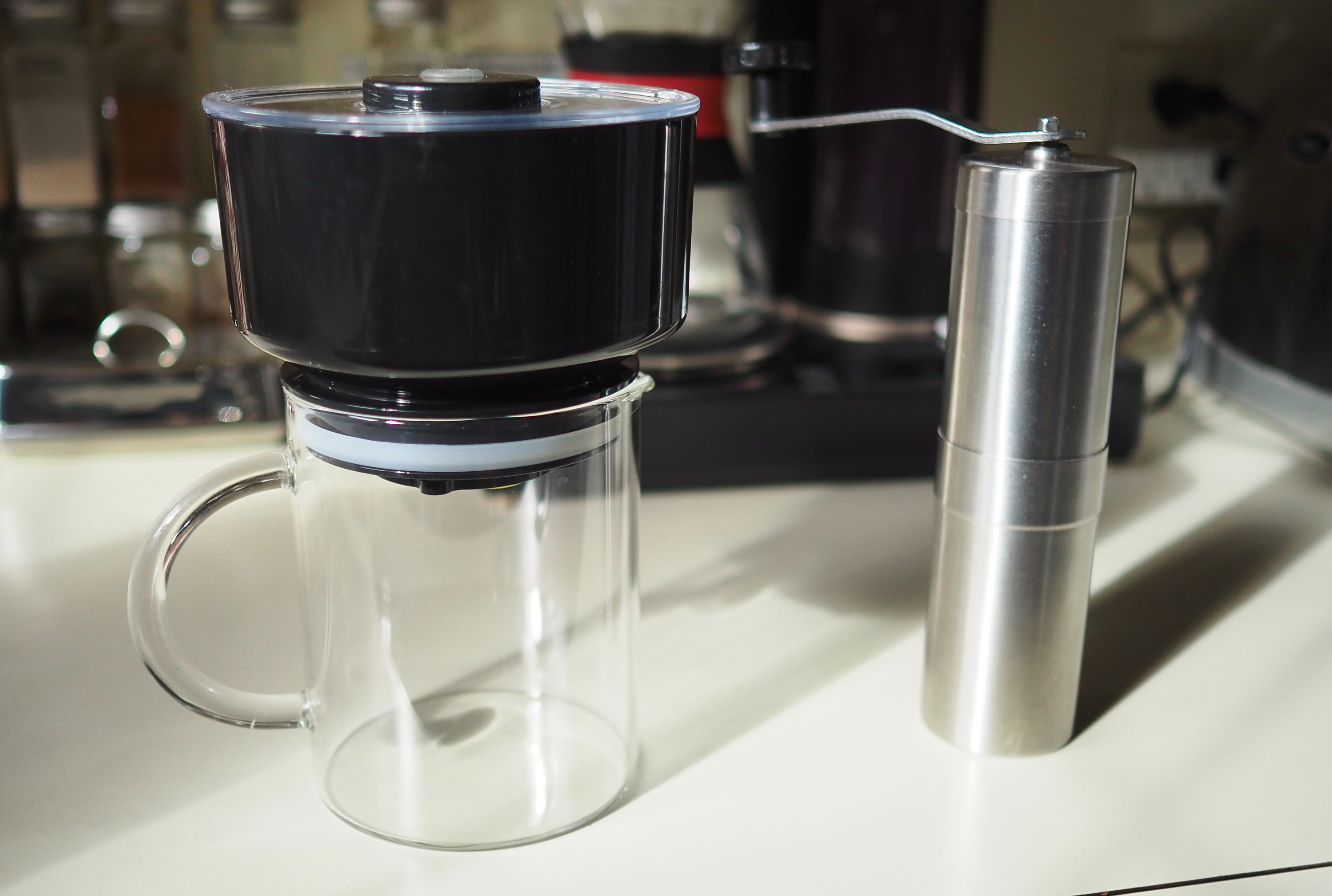 Want to get the first coffee maker to come out of Colombia — you know, coffee central? The FrankOne is a cool device that quickly makes a pourover-like cup by steeping the grounds then creating a vacuum in the chamber below it, sucking the liquid out but leaving the grounds up top. It works great, operates on a rechargeable battery, and is easy to clean (especially if you have a garbage disposal).
Want to get the first coffee maker to come out of Colombia — you know, coffee central? The FrankOne is a cool device that quickly makes a pourover-like cup by steeping the grounds then creating a vacuum in the chamber below it, sucking the liquid out but leaving the grounds up top. It works great, operates on a rechargeable battery, and is easy to clean (especially if you have a garbage disposal).
Price: $80 from FrankDePaula
ROK manual espresso maker
I avoided the many fancy espresso machines out there for this review mainly for the reason that they are complex, expensive, and require considerable upkeep. The ROK is about as simple an espresso maker as you can get, bested only by a stovetop Moka pot.
To work the ROK, you pack your grounds into the included espresso filter and attach it to the machine like any other. Then you pour your hot water into the reservoir up top, raise the arms, and depress them with a slow, steady pressure that forces it through the filter. It really is that simple.
It may not be quite the high-pressure espresso you get from a “real” machine but it’s quite good, and the process can be repeated to increase the volume and produce something like an americano. The coffee produced by the ROK is a bit like a Moka Pot’s, but a bit less strong and far less likely to be burnt.
The machine itself is bulletproof — and I mean I think it’s actually bulletproof. It’s practically solid metal, though the reservoir and bellows are rubber. Use this to make coffee while camping and then fend off a bear attack.
For a unique, electricity-free coffee experience the ROK is a great option, though not necessarily a practical one.
Price: $189 from ROK
Osma
I haven’t gotten to test this one yet (though I will), but designer Joey Roth hasn’t done me wrong yet. This new device from his workshop uses a completely new method of circulating hot water through grounds, making a drip-like cup in a very short time, or cold brew, or tea. If your loved one is a gadget fiend, this is one they probably haven’t had the chance to covet yet. Technically it uses pods, but they’re totally biodegradable and you can fill them with your own grounds or leaves.
Price: $185 from Osma
I’ve used pourover as my main method of making coffee for years, and it reliably produces the best single cup you can have, though at the cost of being somewhat time-consuming.
Kalita Wave 185
Kalita makes a couple sizes of these pourover cones, and although I have happily used my 155 for many years, if I could do it over again I’d opt for the slightly larger 185, which is more forgiving when you’re pouring and can brew more than the 16 ounces that is the realistic upper limit of mine.
Price: $36 from Amazon
OXO’s pourover cone with tank
If hovering by the stove and watering your grounds for the two to three minutes it takes to make a cup is not something you enjoy, OXO has a nice little gadget that simplifies things. It’s basically a pourover cone with a reservoir that sits on top, dripping water through a few tiny holes at a steady rate.
It made a good cup and with minimal fuss, but the capacity is limited, so if you want more than 12 ounces you’ll have to refill the reservoir.
Price: $16 from Amazon
Kone and other metal filters
These permanent filters have gotten quite good, and I have one that sits right on top of a cup. No more paper! However I would recommend these only to people who have a garbage disposal or sink that can handle a lot of grounds, because cleaning the filter involves losing a lot of grit down the drain. Occasional deep cleaning is required but it’s nice to reduce waste even a little bit.
Price: Around $30-40, depending on brand.
Just as a general note: These types of subscriptions are great, but you need to do a little bit of research or your loved one will end up with a roast they don’t like. I don’t want to recommend any in particular, since they all specialize in different things, but aim to prop up independent roasteries and fair trade rather than just getting a steady supply of the same old thing from a major chain.
Some good options:



